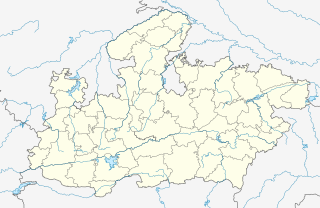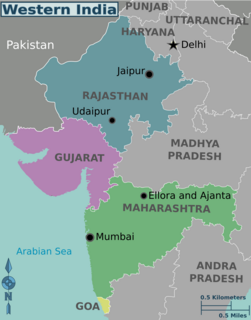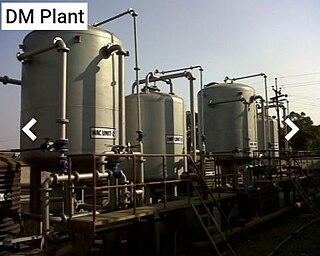
Chhattisgarh is one of the 28 states of India and is located in East-Central India. The state was formed on 1 November 2000 and was earlier part of its neighboring state, Madhya Pradesh.

Madhya Pradesh is a state in central India. Its capital is Bhopal, and the largest city is Indore, with Jabalpur, Gwalior, Rewa, and Ujjain being the other major cities. Madhya Pradesh is the second largest Indian state by area and the fifth largest state by population with over 75 million residents. It borders the states of Uttar Pradesh to the northeast, Chhattisgarh to the southeast, Maharashtra to the south, Gujarat to the west, and Rajasthan to the northwest.

Indore is the most populous and the largest city in the Indian state of Madhya Pradesh. It serves as the headquarters of both Indore District and Indore Division. It is also considered as an education hub of the state and has campuses of both the Indian Institute of Technology and the Indian Institute of Management. Located on the southern edge of Malwa Plateau, at an average altitude of 553 meters (1,814 ft) above sea level, it has the highest elevation among major cities of Central India. The city is 190 km (120 mi) west of the state capital of Bhopal. Indore had a census-estimated 2011 population of 1,994,397 and 2,170,295. The city is distributed over a land area of just 530 square kilometres (200 sq mi), making Indore the most densely populated major city in the central province.

Madhya Bharat, also known as Malwa Union, was an Indian state in west-central India, created on 28 May 1948 from twenty-five princely states which until 1947 had been part of the Central India Agency, with Jiwajirao Scindia as its Rajpramukh.
BIMARU is an acronym formed from the first letters of the names of the Indian states of Bihar, Madhya Pradesh, Rajasthan, and Uttar Pradesh. It was coined by Ashish Bose in the mid-1980s. BIMARU has a resemblance to a Hindi word bīmār (बीमार) meaning "sick". This was used to refer to the poor economic conditions within those states. Several studies, including those by the UN, showed that the performance of the BIMARU states were dragging down the GDP growth rate of India. During the period of 2008-2011, some of these states started to develop faster than some of the major states and the concept of BIMARU was being considered to be outdated. However in the recent years, this concept has reemerged due to faltering growth rates of the states.
India's population, as per 2011 stood at 1.21 billion. There are great inequalities in health between states. The infant mortality in Kerala is 6 per thousand live births, but in Uttar Pradesh it is 64.

Western India is a loosely defined region of India consisting of its western part. The Ministry of Home Affairs in its Western Zonal Council Administrative division includes the states of Goa, Gujarat, and Maharashtra along with the Union territory of Dadra and Nagar Haveli and Daman and Diu, while the Ministry of Culture and some historians also include the state of Rajasthan. The Geological Survey of India includes Maharashtra but excludes Rajasthan whereas Ministry of Minority Affairs includes Karnataka but excludes Rajasthan.

Dainik Bhaskar is an Indian Hindi-language daily newspaper owned by the Dainik Bhaskar Group. According to Audit Bureau of Circulations, it is ranked 4th in the world by circulation and 1st in India. Started in Bhopal in 1958, it expanded in 1983 with the launch of Dainik Bhaskar's Indore edition. Today, Dainik Bhaskar Group is present in 12 states with 65 editions in Hindi, Marathi and Gujarati.

Community-led total sanitation (CLTS) is an approach used mainly in developing countries to improve sanitation and hygiene practices in a community. The approach tries to achieve behavior change in mainly rural people by a process of "triggering", leading to spontaneous and long-term abandonment of open defecation practices. It focuses on spontaneous and long-lasting behavior change of an entire community. The term "triggering" is central to the CLTS process: It refers to ways of igniting community interest in ending open defecation, usually by building simple toilets, such as pit latrines. CLTS involves actions leading to increased self-respect and pride in one's community. It also involves shame and disgust about one's own open defecation behaviors. CLTS takes an approach to rural sanitation that works without hardware subsidies and that facilitates communities to recognize the problem of open defecation and take collective action to clean up and become "open defecation free".
Manual scavenging is a term used mainly in India for "manually cleaning, carrying, disposing of, or otherwise handling, human excreta in an insanitary latrine or in an open drain or pit". Manual scavengers usually use hand tools such as buckets, brooms and shovels. The work is regarded as a caste-based, dehumanizing practice. The workers have to move the excreta, using brooms and tin plates, into baskets, which they carry to disposal locations sometimes several kilometers away. These sanitation workers, called "manual scavengers", rarely have any personal protective equipment. The term Manual scavenging differs from the stand alone term 'Scavenging which refers to the act of sorting though and picking from discarded waste In Gaborone, Botswana, as in other large cities in the developing world, members of the community try to make a living by engaging in landfill scavenging. Scavenging is one of the oldest economic activities. The quantities of waste generated and the materials contained in trash are different in different parts of the world, and change over time. Scavengers usually collect from the streets ,dumpsites, or landfills. They collect re-usable and recyclable material that can be included into the economy's production process.

Literacy in India is a key for socio-economic progress, Despite government programmes, India's literacy rate increased only "sluggishly". The 2011 census, indicated a 2001–2011 decadal literacy growth of 9.2%, which is slower than the growth seen during the previous decade. An old analytical 1990 study estimated that it would take until 2060 for India to achieve universal literacy at then-current rate of progress.

The water supply and sanitation in India has increased greatly from 1980 to present. Still, many people lack access to clean water, toilets, and sewage infrastructure. Various government programs at national, state, and community level have brought rapid improvements in sanitation and the drinking water supply. These various programs are ongoing.
Naman Vinaykumar Ojha is an Indian first-class cricketer. He represents India in International cricket. He made his Test debut for India against Sri Lanka on 28 August 2015.
The Government of India has initiated several National Missions in order to achieve individual goals that together ensure the wellbeing of its citizens.
Universal basic income in India refers to the debate and practical experiments with universal basic income (UBI) in India. The greatest impetus has come from the 40-page chapter on UBI that the Economic Survey of India published in January 2017. It outlined the 3 themes of a proposed UBI programme:

Open defecation is the human practice of defecating outside rather than into a toilet. People may choose fields, bushes, forests, ditches, streets, canals or other open space for defecation. They do so either because they do not have a toilet readily accessible or due to traditional cultural practices. The practice is common where sanitation infrastructure and services are not available. Even if toilets are available, behavior change efforts may still be needed to promote the use of toilets. 'Open defecation free' (ODF) is a term used to describe communities that have shifted to using toilets instead of open defecation. This can happen, for example, after community-led total sanitation programs have been implemented.

Swachh Bharat Mission (SBM), Swachh Bharat Abhiyan (SBA), or Clean India Mission is a country-wide campaign initiated by the Government of India in 2014 to eliminate open defecation and improve solid waste management (SWM). Phase 1 of the mission lasted till October 2019. Phase 2 will be implemented between 2020–21 and 2024-25.
This is a list of Indian states and territories ranked before the availability of toilet facilities per household. Figures are from the 2011 census of India. In a massive cleanliness drive after the election of Narendra Modi in 2014, over 90 million toilets have been built over the course of 4 years, ferociously taking India towards an open defecation free country.
Swachh Survekshan is an annual survey of cleanliness, hygiene and sanitation in cities and towns across India. It was launched as part of the Swachh Bharat Abhiyan, which aimed to make India clean and free of open defecation by 2 October 2019. The first survey was undertaken in 2016 and covered 73 cities ; by 2020 the survey had grown to cover 4242 cities and was said to be the largest cleanliness survey in the world. The surveys are carried out by Quality Council of India.
Baghuwar is a village located in the Narsinghpur district in the state of Madhya Pradesh, India. The village is located in the Jabalpur division of Madhya Pradesh. It is approximately 201 kilometres (125 mi) away from Bhopal, which is the capital city of Madhya Pradesh.











